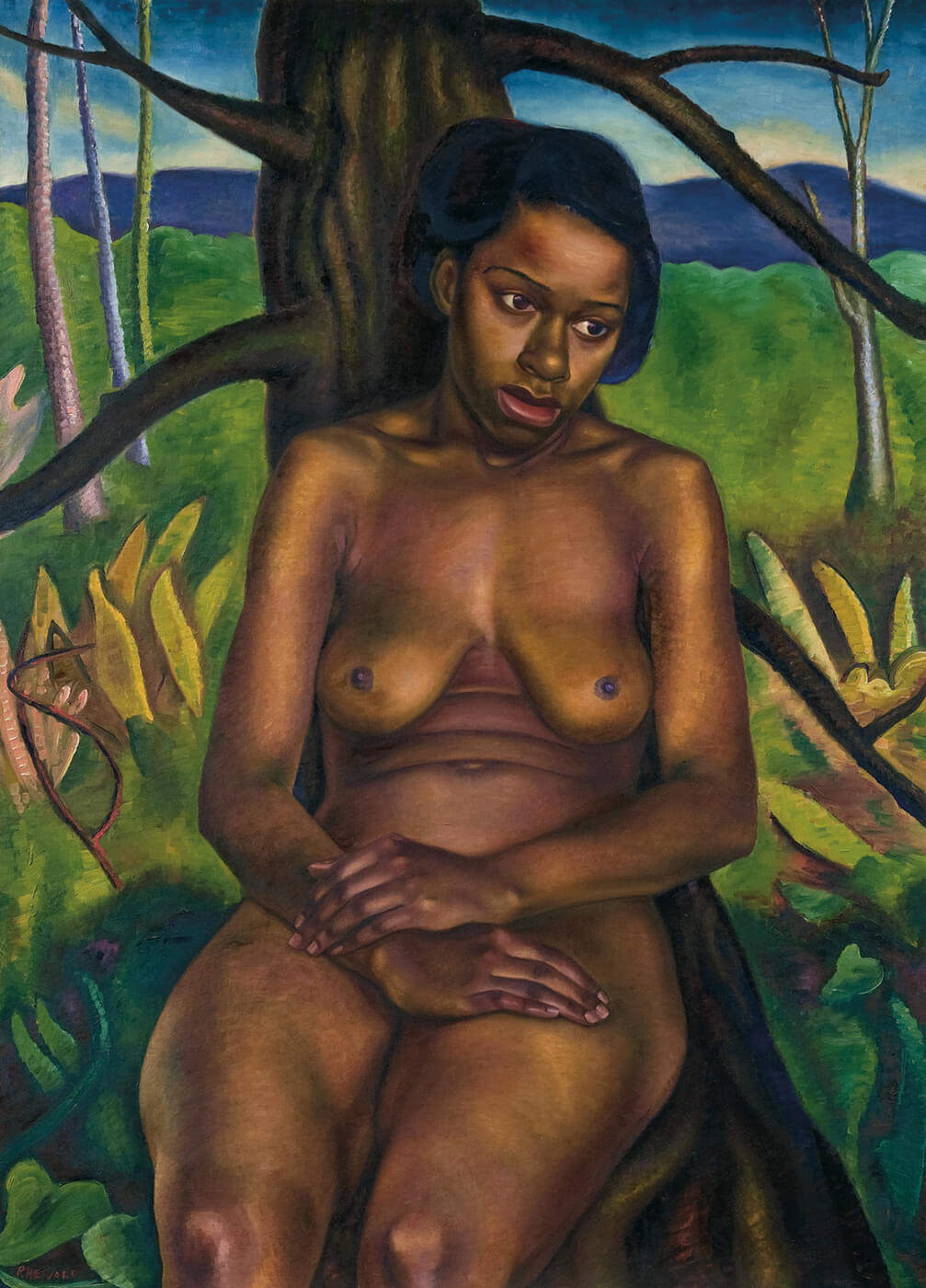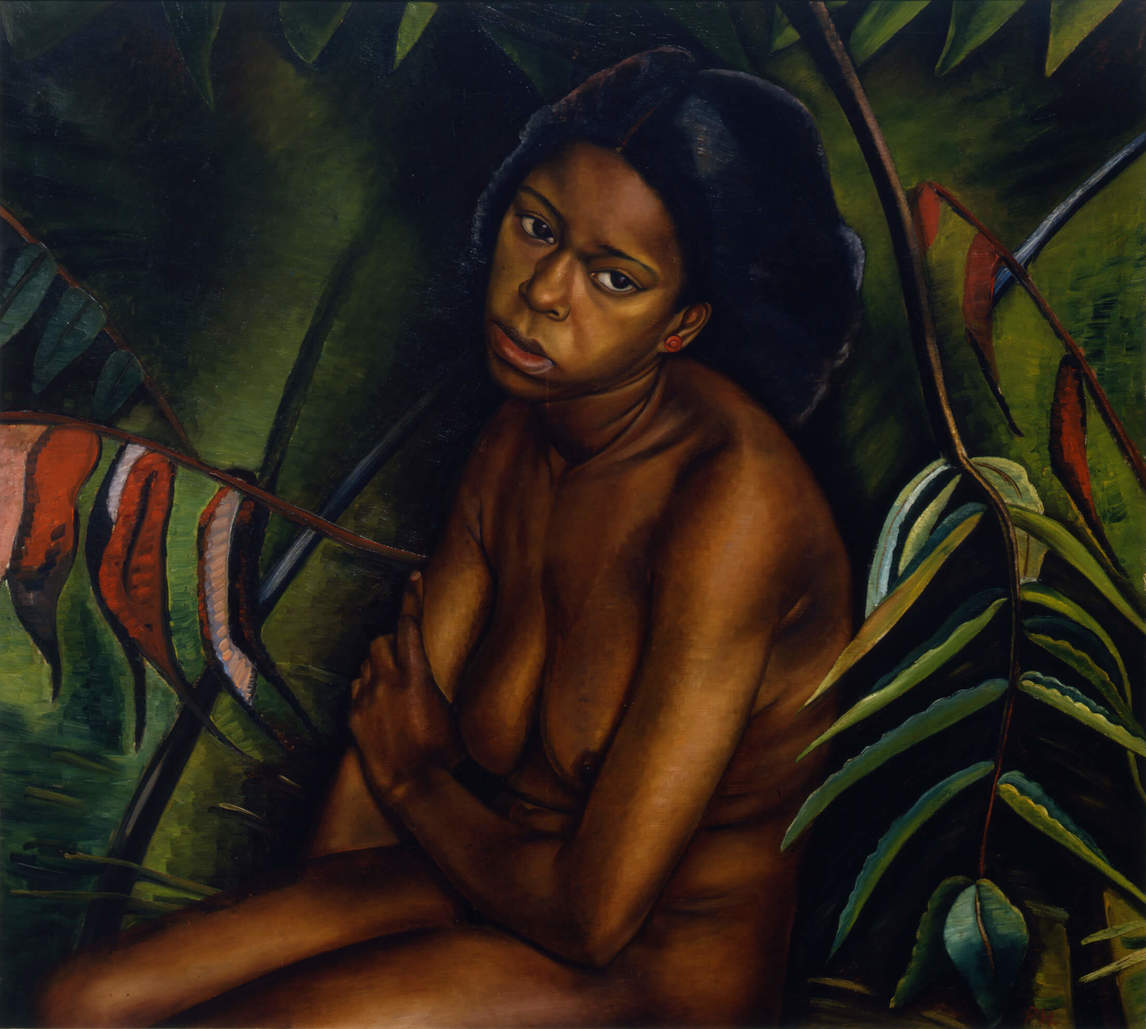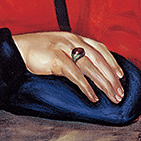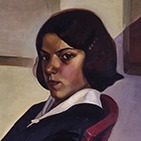Hester 1937

Prudence Heward, Hester, 1937
Oil on canvas, 122.5 x 89.2 cm
Agnes Etherington Art Centre, Kingston, Ontario
Heward produced several paintings of black women, but Hester is remarkable for being her only painting of an adult black female subject who is named in the title. Despite this, we do not know who this woman was or how Heward met her. This is typical of Heward’s black female subjects, and it’s unclear why she seems to have had a particular interest in representing these sitters.

Heward travelled to Bermuda in 1936 to stay with her friend, the artist Isabel McLaughlin (1903–2002). Although Heward’s first work representing a black woman, Dark Girl, 1935, was completed before that trip, her time in Bermuda provided Heward with the opportunity to paint both black female models and vibrant landscapes. Heward also made sketches of black women as preparation for her paintings, for example her Study of a Black Nude, c. 1936, which she likely produced while in Bermuda.
Heward included the sumach plant in Hester, which she had previously used in Dark Girl. The plant, despite being found not only in tropical climates but also in Canada and elsewhere, has been read as exotic by art historian Charmaine Nelson, among others. Heward produced a preparatory sketch entitled Sumachs—Study for Background of Dark Girl around 1935. By framing the body within a lush and colourful landscape, Heward exoticizes the female subject and positions her as “other” in relation to white Canadians. Some art historians have rejected this reading of Hester, but it is worth asking whether we can imagine Heward painting a white female nude against this background and in this pose. In Girl Under a Tree, 1931, which represents a rare example of Heward depicting a white female nude, her approach is significantly different in both the setting and the sculptural, idealized body.
After Heward returned to Montreal, she completed Hester and then continued to paint black women in works such as Girl in the Window, 1941. Heward owned a copy of George Bernard Shaw’s 1932 book The Adventures of the Black Girl in Her Search for God, in which the female protagonist questions white authority. The book may point to some of the racial issues she was thinking about when painting black subjects.

 About the Author
About the Author
 More Online Art Books
More Online Art Books
 Acknowledgements
Acknowledgements